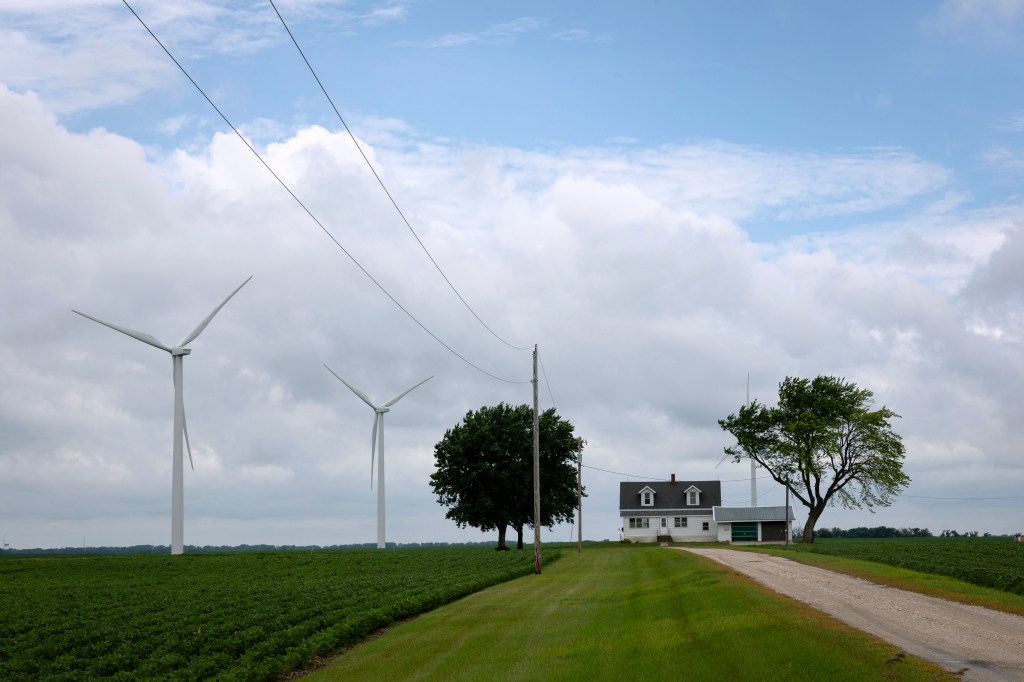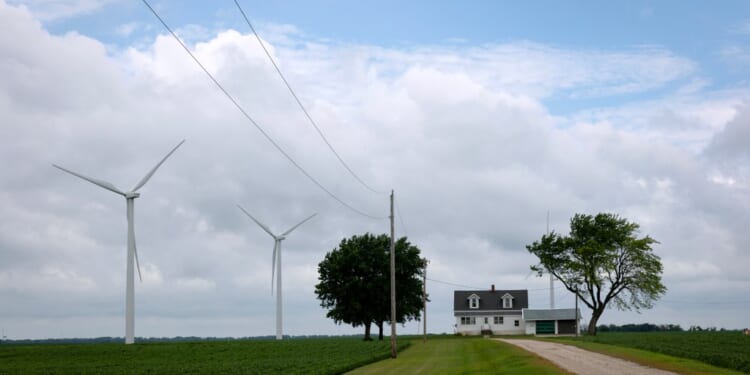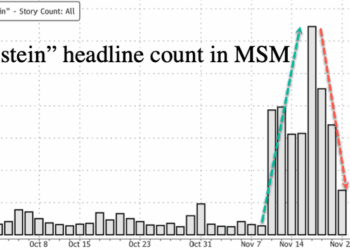
A new report from the energy think tank Ember found that through the first half of 2025, renewable electricity generation—broadly defined as wind, solar, nuclear, hydropower, and bioenergy—surpassed coal for the first time. Global electricity demand increased 2.6 percent from January through June this year, and renewable energy met 34.3 percent of the total, squeaking past coal’s 33.1 percent (the rest was met by gas and other fossil fuels).
Solar was the driving force behind the increase, according to the report. While wind and solar generation grew by more than enough to meet the 2.6 percent increase in demand (down from 5.3 percent in the previous six months due to slowing economic growth and fewer heat waves in Asia), solar alone met 83 percent of the world’s new electricity requirements. Year-over-year, solar generation increased by 31 percent, with wind growing 7.7 percent. The other major low-carbon energy sources, nuclear and hydropower, saw increases of 2.5 percent and decreases of 2 percent, respectively.
Economies of scale, centered around massive manufacturing hubs in China and Southeast Asia, have driven solar costs down sharply compared to where they were a decade and a half ago. Since 2010, the cost-per-watt of solar electricity has decreased by 90 percent, from around 30 cents a watt to 3 or 4 cents a watt (assuming regional variance). China now makes around 80 percent of the world’s solar panels, making it far more feasible for other countries to import them cheaply.
Technological improvements, such as advances in the ability of panel cells to efficiently capture the sun’s energy, have also helped. Perhaps the most significant technological advancement is the development of improved energy storage in batteries, allowing utility systems to store energy for times when the sun isn’t shining. Battery advances have eased—though not solved—renewable energy’s intermittency problem. In the absence of a means to store renewable energy, power grids have tended to rely on steadier sources of energy, like coal, natural gas, and nuclear energy, to provide a crucial backstop when solar and wind power fade.
But battery storage has made enormous leaps. In the last five years, for example, California has been able to triple battery storage capacity. It’s part of a global trend: The world’s capacity is expected to increase 10 times by 2035. Wracked by rolling blackouts in 2020 as its grid faced too much strain for renewables to handle, California now regularly sees roughly a quarter of its electricity demand met by batteries during peak seasons.
“The truth is, renewables are cheap,” Kenneth Gillingham, an economist who studies energy economics at Yale University, told TMD. “The big challenges right now are not the technology,” he argued, but rather questions of siting, connection to the grid, and permitting. Because of existing environmental laws and regulations, any U.S. energy project has to go through a lengthy permitting process. Currently, 61 percent of environmental impact statements, required under the National Environmental Policy Act, take over two years to complete—even though the law itself mandates that such statements take less than two years to produce.
In Congress, legislators on both sides of the aisle are increasingly identifying a need to reform permitting: In 2024, then-Sen. Joe Manchin, a Democrat from West Virginia, and Sen. John Barrasso, a Republican from Wyoming, introduced a bill to streamline permitting for energy projects, but it failed to pass, in part due to opposition from environmental groups.
The Trump administration has taken several steps, through executive orders and rule changes at the departments of Energy and the Interior, to make building new energy infrastructure easier. But it has also canceled several projects that had already been permitted, raising concerns about market uncertainty. Interior Secretary Doug Burgum has also assumed personal responsibility for approving wind and solar projects, which he has criticized for problems of intermittency and for receiving “preferential treatment” under the Biden administration.
In August, the Department of the Interior’s bureau responsible for ocean energy abruptly canceled the Revolution Wind project, which was reportedly 80 percent finished and set to provide offshore wind power to Rhode Island and Massachusetts. Interior officials cited undefined national security concerns (the Danish company leading the project sued over the order, which led to a judge overturning it for now). And last Thursday, the DOI canceled the environmental impact review process for Esmeralda 7, a constellation of solar power farms in the Nevada desert that would have been one of the largest such projects in the world.
Outside of permitting moves, however, Trump administration officials argue that they’re merely allowing the free market to work. “Thirty-three years we’ve subsidized wind and solar power in the United States,” Energy Secretary Chris Wright said late last month. “If you can’t rock on your own after 33 years, maybe that’s not a business that’s going places.”
Some analysts welcome these moves. “Where I think we should be headed—and where we’re not headed fast enough—is where all of the above can compete fairly, and that the market will determine what the best mix of energy is,” Jack Spencer, a senior research fellow for energy and environmental policy at the Heritage Foundation, told TMD. Spencer also argued that, while not ideal, recent administration funding for coal-fired power plants was necessary to restore balance to a grid that had become overburdened with intermittent power sources.
Benjamin Zycher, a senior fellow in energy and environmental policy at the American Enterprise Institute, went further. “The competitive disadvantages of coal plants are entirely artificial,” he argued in response to a question about the price of renewables dropping below coal. “They’re not driven by market fundamentals. They’re driven by policies.” In Zycher’s view, the White House is restoring fairness to the energy marketplace.
But Joseph Majkut, the director of the energy security and climate change program at the Center for Strategic and International Studies, told TMD that the global shift toward renewables, across a variety of different companies, demonstrates that renewables aren’t solely propped up by government policy. “The market is identifying a portfolio of generation which provides effective load-carrying capacity and enough new generation to meet growing power demand,” he said.
Electricity demand in both the U.S. and the world is expected to grow in the next several decades, with data centers for artificial intelligence quickly becoming a significant user of power and developing countries needing more energy to lift their citizens out of poverty. Majkut told TMD that while renewable energy may not be quite as cheap and efficient as many advocates claim, it’s still a “very useful part of a portfolio of generation to help us meet our needs.”
Even without federal subsidies, then, renewable energy might finally have enough momentum to stand on its own, especially outside of the U.S. “Once renewables become the cheapest thing to build, if you’re in Brazil, if you’re in Ghana, if you’re in Mozambique, and you want to put on more electricity, you start looking at the costs,” said Gillingham. “You suddenly are going to pretty quickly look at solar and wind as the options.”

















